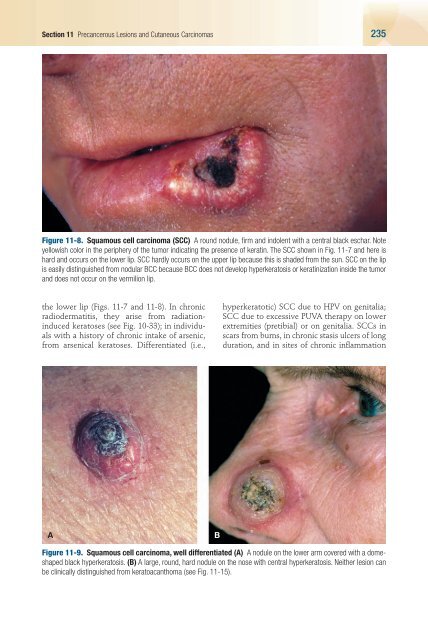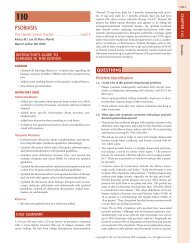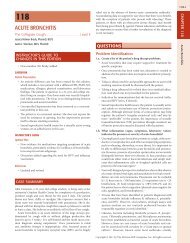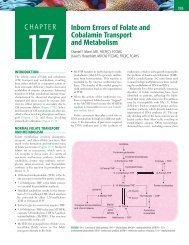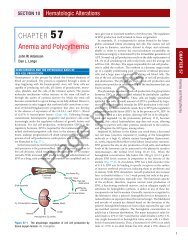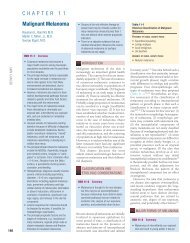TOC and Sample Chapters - McGraw-Hill Professional
TOC and Sample Chapters - McGraw-Hill Professional
TOC and Sample Chapters - McGraw-Hill Professional
Create successful ePaper yourself
Turn your PDF publications into a flip-book with our unique Google optimized e-Paper software.
Section 11 Precancerous Lesions <strong>and</strong> Cutaneous Carcinomas 235<br />
Figure 11-8. Squamous cell carcinoma (SCC) A round nodule, firm <strong>and</strong> indolent with a central black eschar. Note<br />
yellowish color in the periphery of the tumor indicating the presence of keratin. The SCC shown in Fig. 11-7 <strong>and</strong> here is<br />
hard <strong>and</strong> occurs on the lower lip. SCC hardly occurs on the upper lip because this is shaded from the sun. SCC on the lip<br />
is easily distinguished from nodular BCC because BCC does not develop hyperkeratosis or keratinization inside the tumor<br />
<strong>and</strong> does not occur on the vermilion lip.<br />
the lower lip (Figs. 11-7 <strong>and</strong> 11-8). In chronic<br />
radiodermatitis, they arise from radiationinduced<br />
keratoses (see Fig. 10-33); in individuals<br />
with a history of chronic intake of arsenic,<br />
from arsenical keratoses. Differentiated (i.e.,<br />
A B<br />
hyperkeratotic) SCC due to HPV on genitalia;<br />
SCC due to excessive PUVA therapy on lower<br />
extremities (pretibial) or on genitalia. SCCs in<br />
scars from burns, in chronic stasis ulcers of long<br />
duration, <strong>and</strong> in sites of chronic inflammation<br />
Figure 11-9. Squamous cell carcinoma, well differentiated (A) A nodule on the lower arm covered with a domeshaped<br />
black hyperkeratosis. (B) A large, round, hard nodule on the nose with central hyperkeratosis. Neither lesion can<br />
be clinically distinguished from keratoacanthoma (see Fig. 11-15).


